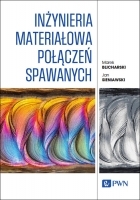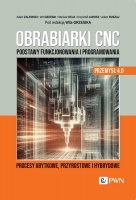Microstructure optimization of alumina/zirconia materials resistant for abrasive wear *
Optymalizacja mikrostruktury materiałów korundowo-cyrkoniowych odpornych na zużycie abrazyjne
Mechanik nr 05/06/2016 - 5. Międzynarodowa Konferencja IMT 2016
STRESZCZENIE: Spiekane kompozyty ziarniste w układzie korundtetragonalne polikryształy dwutlenku cyrkonu są grupą materiałów często stosowaną jako ceramika konstrukcyjna, ze względu na stosunkowo niską cenę oraz dobry poziom właściwości mechanicznych. W pracy przedstawiono wyniki eksperymentu korelującego podstawowe parametry mechaniczne (wytrzymałość, odporność na kruche pękanie) oraz użytkowe (odporność na zużycie ścierne, odporność na pękanie podkrytyczne) z mikrostrukturą tworzyw kompozytowych.
SŁOWA KLUCZOWE: korund, dwutlenek cyrkonu, mikrostruktura, odporność na ścieranie
ABSTRACT: Sintered particulate composites in corundum-tetragonal zirconia system are the group of materials often utilized as structural ceramics because of their relatively low cost and high level of mechanical properties. In the paper results of experiment correlating basic mechanical (strength, fracture toughness) and useful (abrasive wear resistance, subcritical crack growth) parameters with composites microstructure were presented.
KEYWORDS: corundum, tetragonal zirconia, microstructure, wear resistance
BIBLIOGRAFIA / BIBLIOGRAPHY:
- Nevarez-Rascon A., Aguilar-Elguezabal A., Orrantia E., Bocanegra-Bernal M.H. „On the wide range of mechanical properties of ZTA and ATZ based dental ceramic composites by varying the Al2O3 and ZrO2 content”. International Journal of Refractory Metals & Hard Materials. Vol. 27, No. 6 (2009): pp. 962÷970.
- Naglieri V., Palmero P., Montanaro L., Chevalier J. „Elaboration of Alumina-Zirconia Composites: Role of the Zirconia Content on the Microstructure and Mechanical Properties”. Materials. Vol. 6, No. 5 (2013): pp. 2090-2102.
- Sá e Benevides de Moraes M.C. C. [de], Elias C. N., Filho J. D., Guimarães de Oliveira L. „Mechanical properties of aluminazirconia composites for ceramic abutments”. Materials Research. Vol. 7, No. 4 (2004): pp. 643÷649.
- Marro F. G., Palomero P., Kern F., Mastro A. „Processing of alumina–zirconia composites by surface modification route with enhanced hardness and wear resistance”. Ceramics International. Vol. 41, No. 1 (2015): 889÷898.
- Cesari F., Esposito L., Furgiuele F.M., Maletta C.,Tucci A. „Fracture toughness of alumina–zirconia composites”. Ceramics International. Vol. 32, No. 3 (2006): pp. 249–255.
- Grabowski G., Pędzich Z. „Residual stresses in particulate composites with alumina and zirconia matrices”. Journal of the European Ceramic Society. Vol. 27, No. 2–3 (2007): pp. 1287÷1292.
- Pędzich Z. „Fracture of oxide matrix composites with different phase arrangement”. Fractography of Advanced Ceramics III Key Engineering Materials. Vol. 409 (2009): pp. 244÷251, Dusza J., Danzer R., Morrell R., Quinn G.D. (Eds.), Trans Tech Publications Inc., Switzerland.
- ASTM C1421-10, Standard Test Methods for Determination of Fracture Toughness of Advanced Ceramics at Ambient Temperature, (2010).
- ASTM G65-94 Standard: Test Method for Measuring Abrasion Using the Dry Sand/Rubber Wheel Apparatus, (1994).
- ASTM F394-78 Standard: Test Method for Biaxial Flexure Strength (Modulus of Rupture) of Ceramic Substrates, (1996).
- ASTM C1161-02c, Standard Test Method for Flexural Strength of Advances Ceramics at Ambient Temperature, (2002).
- ASTM C1368-06, Standard Test Method for Determination of Slow Crack Growth Parameters of Advanced Ceramics by Constant Stress-Rate Flexural Testing at Ambient Temperature, (2006).























